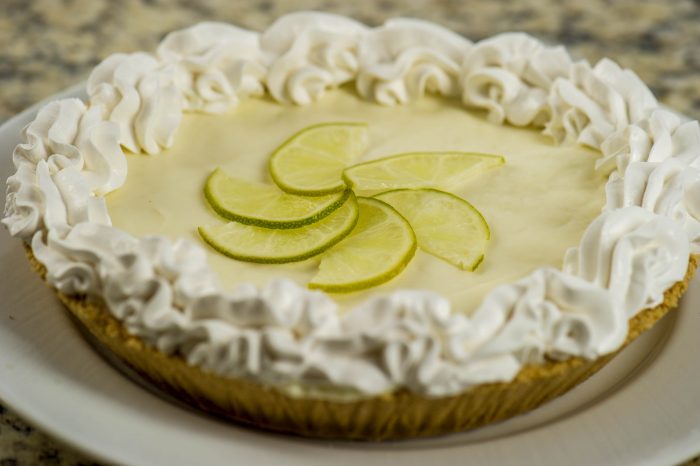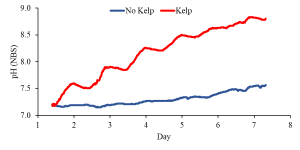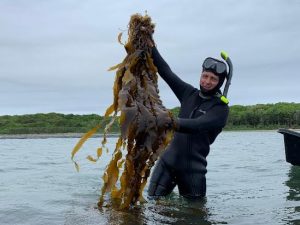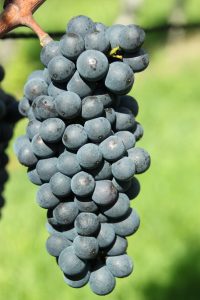By Barbara Beltrami
When I think of summer desserts, the word “chiffon” immediately comes to mind and conjures up visions of airy cakes and pies light as summer frocks or curtains riffled by summer breezes. Fruit lends them their pastel colors … raspberry and strawberry pinks, lime greens, lemon yellows and blackberry lavenders, while egg whites and/or gelatin give them their voluminous substance.
Lemon Chiffon Cake
YIELD: Makes 10 to 12 servings
INGREDIENTS:
2 1/4 cups cake four
3 teaspoons baking powder
1 1/2 cups sugar
1 teaspoon salt
1/2 cup vegetable oil
5 egg yolks
3/4 cup cold water
2 teaspoons finely grated lemon zest
7 – 8 egg whites
1/2 teaspoon cream of tartar
DIRECTIONS:
Preheat oven to 325 F. Into a large bowl sift the cake flour, baking powder, sugar and salt. Make a well in the center, then pour in oil, egg yolks, cold water and zest. Beat 2 minutes at medium speed, until very smooth. In a separate large bowl beat egg whites with cream of tartar until stiff peaks form. With a rubber spatula, fold first mixture, a little at a time, into egg whites until completely blended. Do not beat or stir. Pour into an ungreased 10-inch tube pan.
Bake 50 minutes, then raise heat to 350 F and about bake another 15 minutes, until top springs back when you dent it with your finger. Remove from oven, turn pan upside down on a wire cake rack and let cool completely. Gently loosen cake from sides of pan with a spatula or knife and remove from pan; turn right side up and serve with lemon sorbet.
Lime Chiffon Pie
YIELD: Makes 6 to 8 servings
INGREDIENTS:
One 9” baked pie shell
1 tablespoon unflavored gelatin
1 cup sugar
1/8 teaspoon salt
1/4 cup cold water
1/2 cup freshly squeezed lime juice
4 eggs, separated
1 tablespoon finely grated lime zest
Fresh mint sprigs for garnish
DIRECTIONS:
In a large bowl combine the gelatin, half a cup of the sugar, salt, water and lime juice; add egg yolks and beat on medium speed until well blended; transfer to large saucepan and, stirring constantly, cook over low heat until gelatin dissolves, about 5 minutes. Stir in lime zest, cover and chill until mixture starts to thicken, about 30 minutes. In a large bowl, beat egg whites on high speed until foamy, add remaining half cup of sugar gradually until egg whites form stiff peaks. With a spatula, gently fold in gelatin mixture, a little at a time, until completely blended; transfer to pie shell and chill. Garnish with mint sprigs and serve with mango sorbet.
Strawberry Chiffon Pie
YIELD: Makes 6 to 8 servings
INGREDIENTS:
1 graham cracker pie crust
One 1/4-ounce envelope unflavored gelatin
2 cups fresh strawberries, washed and hulled (local, if available)
3 large eggs, separated
3/4 cup sugar
Generous pinch salt
1 tablespoon freshly squeezed lemon juice
DIRECTIONS:
Prepare pie crust according to package directions. Soften gelatin in one cup cold water. In a food processor or blender puree one cup of the strawberries until smooth. Beat egg yolks lightly, then combine with half a cup of the sugar, salt and lemon juice in top of a double boiler. Stirring frequently, cook over simmering water until mixture thickens enough to coat a metal spoon, about 5 minutes; remove from heat. Add softened gelatin to yolk mixture, stir until dissolved, stir in pureed strawberries, then set aside to cool.
Beat egg whites until soft peaks form; gradually add remaining quarter cup of sugar, then continue beating until stiff peaks form; with a rubber spatula carefully fold into cooled berry mixture, then pour into crust and smooth with spatula. Halve the remaining cup strawberries and arrange, cut side down, in pattern over mixture. Chill until firm and serve with iced coffee or iced tea.






















